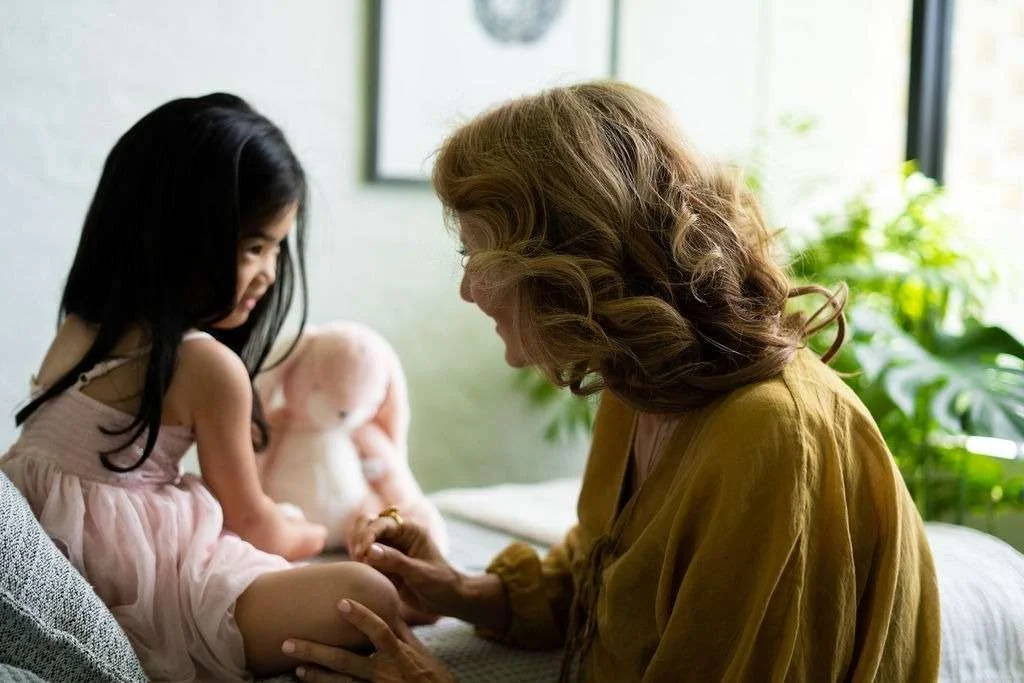
‘The paradox of parenting is that it moves both in slow motion & at fast speed’
-ANON
WHY Traditional Chinese & ORiental MEDICINE?
The time from when a child is born until they reach adulthood, is regarded as a period of unparalleled development, with significant change and imbalance. This is necessary so that children fuel the great physical and developmental needs that are required with growth. However, these periods of intense imbalance, can give rise to a multitude of issues, including; poor sleep, bedwetting, anxiety, poor immunity, digestive issues, developmental, learning and physical delays. Additionally, if a child has an underlying constitutional imbalance, these periods of change are often more problematic, and an array of symptoms usually develop which may withstand conventional treatment.
The aim of all paediatric treatment is to assist children go through these stages with greater ease, by helping the body to rebalance itself with natural, gentle and safe therapies. Oriental medicine, with its emphasis on holism, can work independently, or in conjunction with, conventional treatments.
Paediatric treatments are non-aggressive and brief (1/2hr). They include no-needle alternatives such as Shonishin (Japanese paediatric therapy), paediatric Tuina (massage), acupressure, cutaneous stimulation, ear seeds and herbal medicine. Whilst many of these techniques seem relatively new in the Western world, the treatment of children has a long history in eastern medicine, and today there are hundreds of paediatric traditional Chinese medicine departments in Asian hospitals, and are also being slowly introduced in hospitals throughout Europe and America.
Babies, Children & Teens: We can help with
-
BABIES
Sleep, colic & reflux, constipation, loose stools, eczema, failure to thrive, teething pain, allergies and reactions, physical and mental delay, poor immunity, birth trauma.
-
CHildren
Sleep, bedwetting, digestive issues, constipation/loose stools, anxiety and mental health, eczema, asthma, poor immunity, low appetite, energy & fatigue, allergies & reactions, developmental & learning issues, behavioural issues, auto-immune conditions.
-
TEENAGERS
Energy & fatigue, anxiety, stress & mental health, growing and muscular pain, menstruation irregularity & pain, acne & skin issues, poor immunity, sleep issues, digestive issues, auto-immune conditions, headaches & migraines, chronic health issues.
IN FOCUS:
bed wetting
Bed wetting is a common childhood development complaint, which can be frustrating for parents, families and children. The child will often have had a few attempts at dry nights, and with each failed attempt may garner greater anxiety or even a lack of motivation.
Traditional Chinese medicine views bedwetting as an imbalance in the child’s Qi, and different patterns with unique characteristics help us differentiate they type of pattern. Characteristics which are important to practitioners include the amount of urine, the time they wet the bed, whether wetting is consistent or comes and goes, and the child’s general constitution, personality and energy levels. We often hear in clinic that conventional treatment methods didn’t work on their child (but perhaps did in a friend’s child), and often this is due to lumping all types of bed wetting into one category with one treatment type, without the appreciation that the ‘root’ issues may differ.
Research in the last decade has shown that traditional Chinese medicine can stop bedwetting, improve sleep quality and quality of life (Zhu et al., 2017). Another study found that acupuncture and electrical-acupuncture is more effective in treating bedwetting than alarms, likely due to “influencing spinal micturition centers, parasympathetic innervation to the urinary tract and modulating brain function via the descending serotonergic system” (Bower et al., 2010). A further 2017 review of seven studies conducted on children aged 7–15 years concluded that acupuncture was more effective than either placebo or drug therapy (Azarfar, 2017).
Normally 8-10 treatments are required, and care-givers may continue with some follow up treatment at home, especially when starting a treatment course.
Sources:
Azarfar A, Ravanshad Y, Badiei Aval S, Khamnian Z, Mehrad Majd H. A Systematic Review and a Meta-Analysis of Using Acupuncture for the Treatment of Nocturnal Enuresis. Journal of Nephrology & Therapeutics. 2017 May 22; 07(02).
Bower, W.F & Diao, M. (2010). Acupuncture as a treatment for nocturnal enuresis, Autonomic Neuroscience: Basic and Clinical; 28 October 2010, pP. 63
Zhu, Jihe & Arsovska, Blagica & K., Kristina. (2017). Nocturnal Enuresis-Treatment with Acupuncture. 5.


